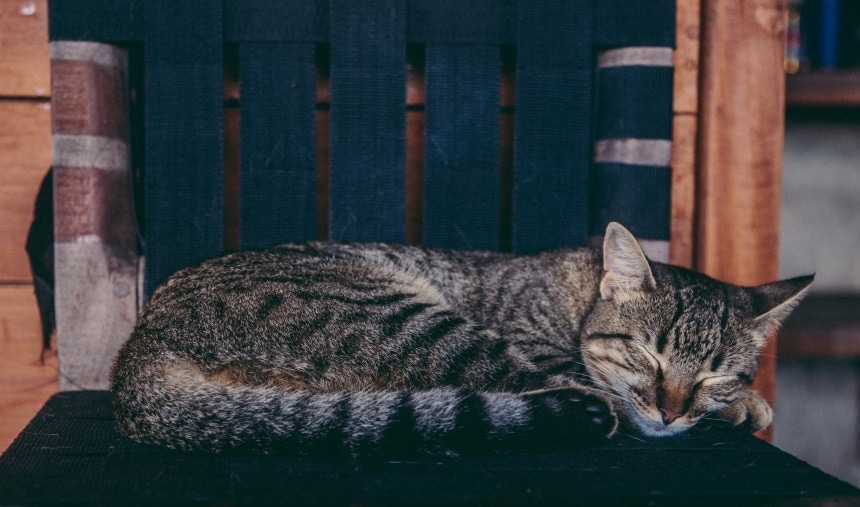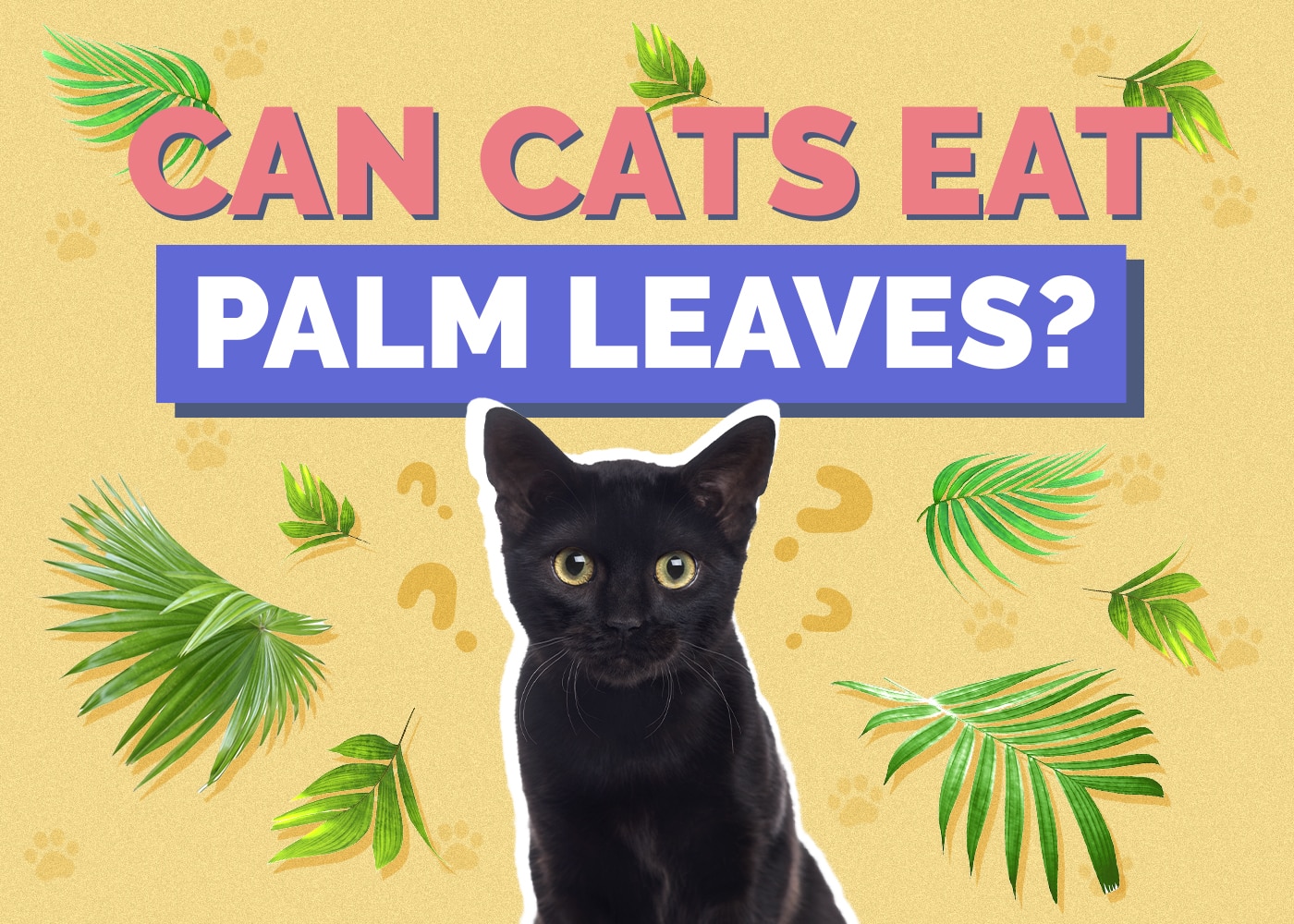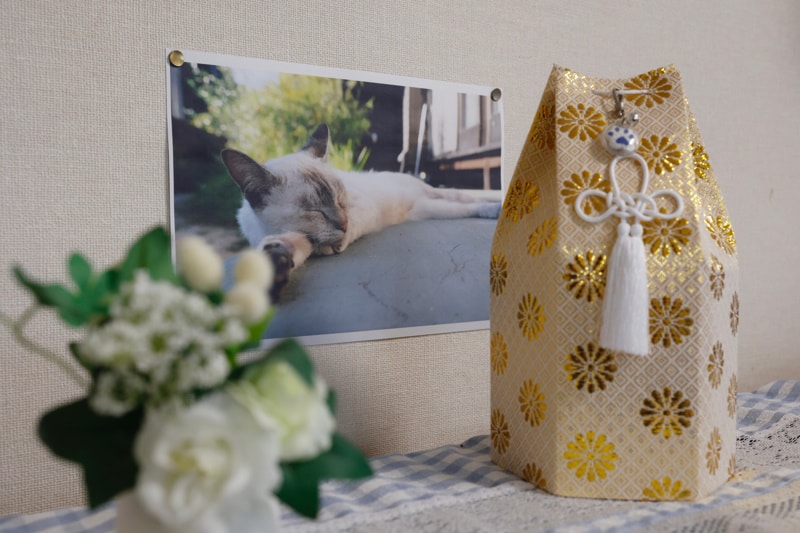7 Types of Cat Toys (And How to Play with Each of Them!)
By Oliver Jones
Updated on
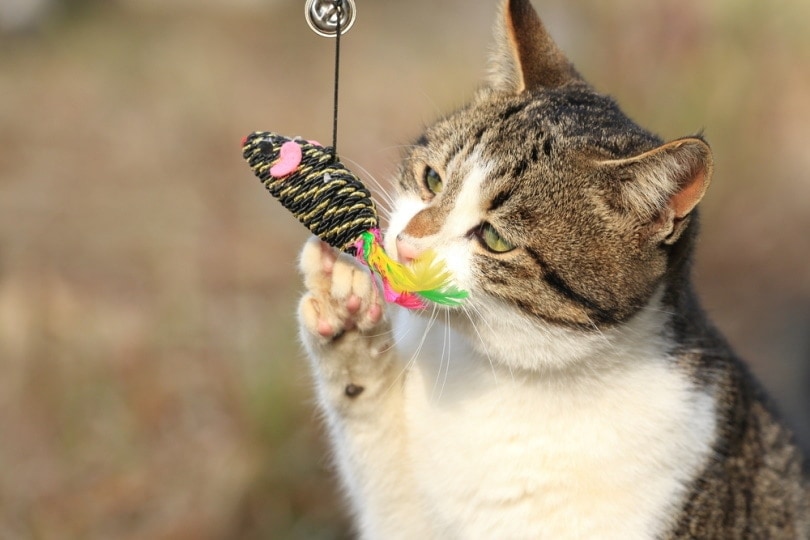
Cats are very playful pets. Some cats, especially young cats, love to play constantly. Playful cats will need a variety of different toys to keep them occupied. Cats without toys or without a way to vent their playful energy can end up being destructive or even harmful. There are plenty of different cat toys on the market. The number and variety of cat toys on the market can be overwhelming and finding the perfect cat toy can be a chore.
There are seven categories of cat toys, and each one has its own different play style. Here are the different types of cat toys, examples of each type, and how to play with each of them. By the end, you will have a better idea of the breadth of toys available so you can help pinpoint the perfect one for your individual cats.
The 7 Types of Cat Toys:
1. Scratchers
Cats love to scratch. In fact, many cats need to scratch to help keep their claws at a normal length. Cats that do not have scratcher toys will often resort to scratching things like shoes and furniture. Scratcher toys have multiple benefits. They give cats something safe and fun to scratch. Scratchers keep cats busy and keep their claws from getting too long or too sharp.
Examples
There are a variety of different cat scratcher toys. Scratcher toys come in towers, mats, pads, and shapes. Some scratchers are shaped like things such as cactuses or spheres. The towers are simple standing scratchers that are small and out of the way. Mats and pads are flat and allow the cats to get on top of the scratcher and use all of their paws at once.
Scratchers are pretty simple. All you have to do is put them out in an area where your cat frequents. Cats are intuitive, and they will find the scratchers and use them when they feel like it. Some cats will prefer specific types of scratchers over others. Mats and pads are simple and do not offer as much play potential as towers, but they are very effective at keeping claws from getting too long. Sometimes cats will only use scratchers when their claws are getting too long, and other times, cats will play with scratchers continuously.
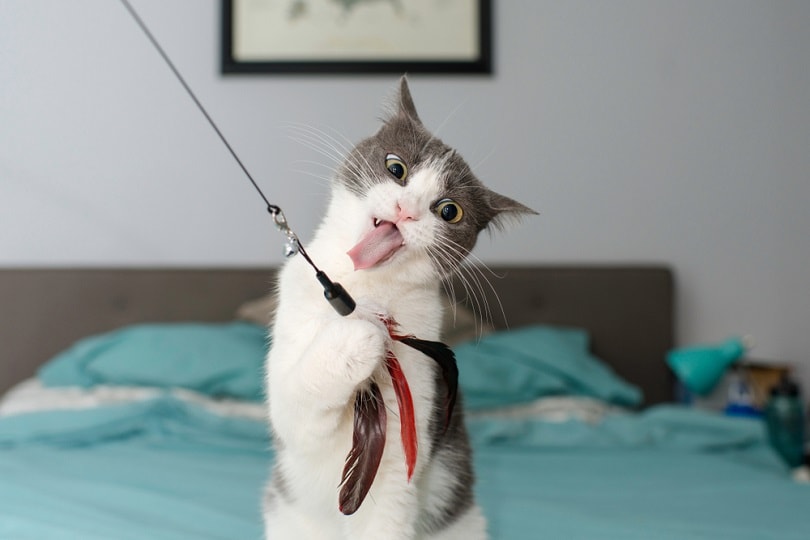
Wands and teasers are some of the most common types of cat toys available. Wands and teasers use string, boas, feathers, and other sensory objects to tickle and tease a cat. The teasing stimulates cats’ brains and activates their predator and play centers which gets them into a playful mood.
Examples
Teasers can be found in a number of different configurations. You can get a teaser that looks like a fishing rod that hooks a tease on the end and allows you to swish and flick feathers, toy mice, and other objects in front of a cat’s face. There are also automatic teasers that are battery-powered and sit on the floor. The automatic teasers move and flick on their own, allowing you to get stuff done in the meantime.
Playing with wands and teasers is simple and fun. Use the teaser or the end of the wand to wave objects in front of a cat’s face. Keep the tease away from their sharp claws as they pounce and swat. Be wary of your cat’s claws because they might accidentally nick your hand if you are not careful.
3. Hiding Toys, Tunnels, or Boxes
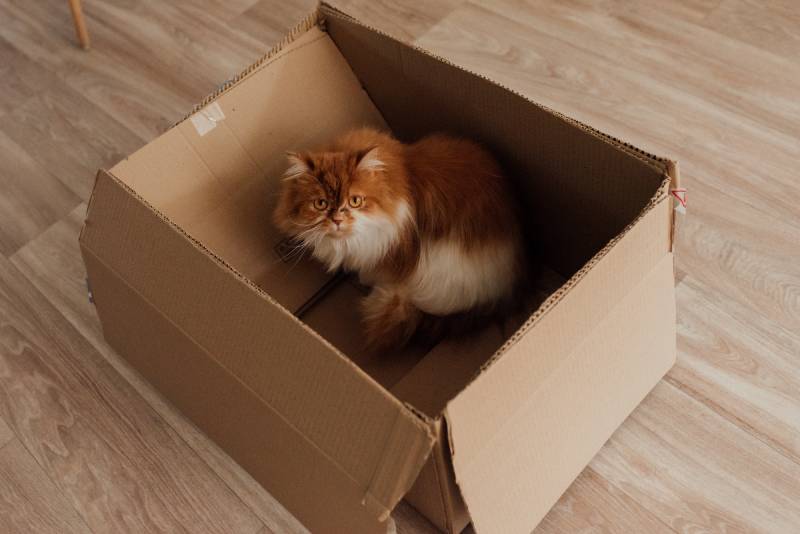
Cats love to hide in boxes and tunnels. Cats can get a ton of enjoyment out of hiding toys. Hiding toys can give a cat a fun thing to do during the day, as well as an escape where they can go to feel safe or get away from the hustle and bustle of the home.
Examples
Hiding toys can be anything that a cat can enter and hide in or relax in. There are boxes, tunnels, tents, and tubes available for purchase. The materials can be canvas, plastic, cardboard, or wood. You can make your own feline hiding toy with old cardboard boxes.
Put the hiding toys out in high-traffic areas where your cat likes to frequent. Make sure the openings are accessible and keep the area safe and free of things your cat dislikes. Cats like to go in and out of hiding toys. They also like to pop out and swat at other toys. You can use hiding toys with other toys like teasers or chase toys. You can try and actively play with your cat using a hiding toy, or you can let your cat enjoy the hiding place by itself.
4. Climbing Toys
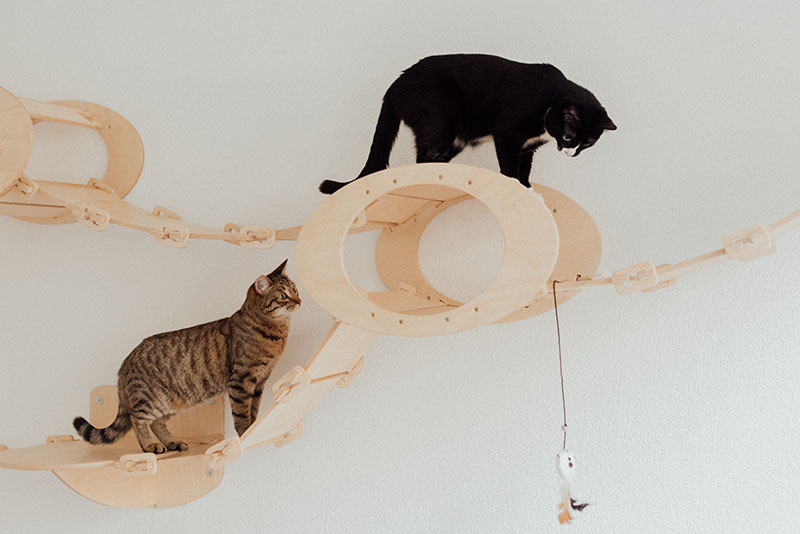
Cats love to climb. Many cats feel safer, more relaxed, and at ease when they are high in the air. Giving cats places of elevation allows them to have a clear bird’s eye view of the area. Cats like to hang out, sleep, observe and play on top of things. Climbing toys are designed to give cats these types of elevated spaces for them to enjoy.
Examples
The most famous example of a climbing toy is the venerated cat tower. Cat towers are some of the most iconic and recognizable pet toys on the planet. Cat towers come in a variety of different shapes, sizes, and configurations. There are tall cat towers, squat towers, towers with caves, towers with scratching posts built-in, and towers with multiple levels.
Cats generally play with climbing toys on their own. Cats love to jump, claw, scratch, and climb up and down these structures. Put the tower in an open area where your cat likes to spend time. If your cat likes the location, it will start frequenting the cat tower more often. If your cat doesn’t seem to be interested in your climbing toy, try moving it to another location that might make your cat feel more comfortable.
5. Puzzle Toys
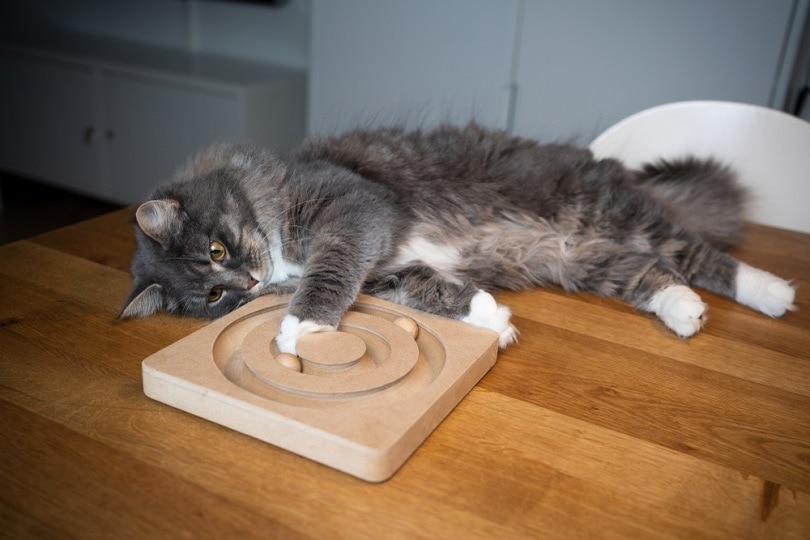
Cats are generally very smart creatures. Some cats really enjoy having their brains teased. Forcing a cat to use its brain can be a lot of fun for the pet owner and the cat. That is why there is an entire subset of toys called feline puzzle toys. These toys are designed to engage a cat’s brain and keep them occupied for long periods of time. Many puzzle toys include moving parts and a reward.
Examples
Some of the most common types of puzzle toys involve a cat moving a piece out of the way to reveal a treat. There are various different styles. Sometimes the moving parts are bugs, other times, they are fish. There are also toys that are similar to whack-a-mole toys for people where objects pop out of a box and encourage a cat to swipe or paw at them. There are also mazes where cats move through a maze with their paws or follow a moving part through a maze to the end, where a treat is then dispensed.
Playing with puzzle toys requires three phases. First, you have to set up the puzzle toy. Usually, these toys include batteries or a switch. Next, you have to observe the play session. See if your cat understands the puzzle or enjoys the play session. Last, you have to reload or reset the puzzle if your cat completes it. Make sure the treats are locked and loaded and make sure the triggers or switches are in their correct position for another round.
6. Chase Toys
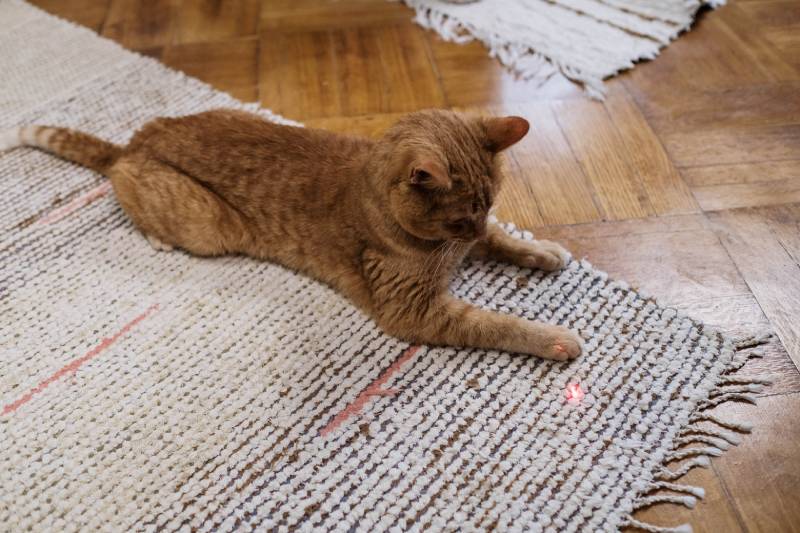
Chase toys are anything that gets cats to run around the house. Cats love to chase things. In the wild, chasing is a common and important method of playing between young cats and dogs. Chasing is a key component of hunting. Cats need to stalk, chase and pounce on their prey in order to eat. Chase toys tap into that primal instinct and get cats to run around as if on the hunt.
Examples
Chase toys come in a few very different configurations. There are electronic chase toys that move balls or toy mice around in a circle or figure-eight pattern. Laser pointers are also considered chase toys. Cats love finding and running after the laser dot. Even some wands or teasers can be used as a chase toy if you can get your cat to chase or follow the toy.
Get your cat’s attention with the chase toy, and then start moving it. If it is automatic, then start the toy up and get it running. If you are controlling a remote-control mouse or using a laser pointer, then get your cat’s attention. If the cat likes the toy, it should lock onto it and start chasing the toy around. You can play with a cat until they start to tire out or lose interest. It is a good way to hone their predator instincts and get them some exercise, especially if it is an indoor cat.
7. Catnip

Catnip is a classic type of cat toy. Catnip causes cats to experience euphoria. It makes them vocalize and rub. Catnip can make even the crankiest of cats playful and joyful. Catnip affects cats in different ways. Smelling catnip usually makes cats energetic and euphoric. Eating catnip can cause an opposite reaction where cats get mopey and mellow.
Examples
You can give a cat catnip a few different ways. You can buy raw catnip and put it into a sock or bag at home. You can also buy catnip toys that already have the catnip inside them. Catnip toys often look like things such as birds, fish, or mice. There are catnip sticks, catnip balls, and catnip treats.
To get your cat to play with catnip, all you have to do is expose the cat to the catnip. If it is in a toy, simply give the cat the catnip toy. If you have raw catnip, it is best to put the catnip into something to prevent the cat from eating it. Smelling catnip will get a cat revved up in mere moments. Catnip generally wears off after 10 to 20 minutes of exposure.
What If Your Cat Doesn’t Want to Play?
Not all cats are playful. Some cats refuse to play, no matter what kind of toys you provide them. That is okay. Every cat is different. Sometimes you just need to find the right toy that clicks for your cat. If you want to try and get your cat to play, rotate through some different types of toys and see if any cause a different reaction. Younger cats are often more likely to play than older cats. If you have an older cat that doesn’t like to play, there is a good chance that they simply don’t want to play anymore. It is natural to have cats lose interest in playing as they age.
Conclusion
There is a cat toy on the market that is absolutely perfect for your cat, whether you have a playful kitten that needs constant attention or an older cat that just wants a box or cat tower to hang out in. There are toys that range from simple boxes to complicated puzzles. There are laser pointers, catnip mice, and bouncing feathers. Your cat will never have to go without the perfect play session ever again once you find a toy that is the right fit.
- See Also: 10 Best Remote Control Cat Toys
Featured Image Credit: kou2341, Shutterstock

